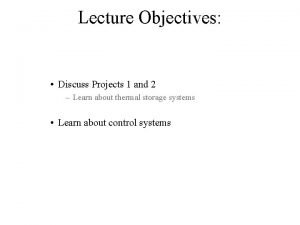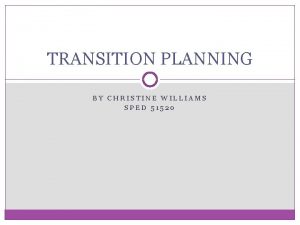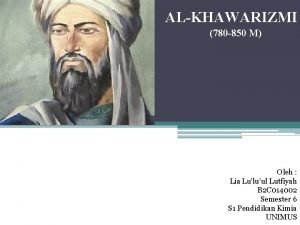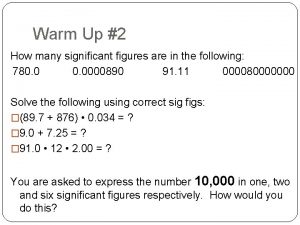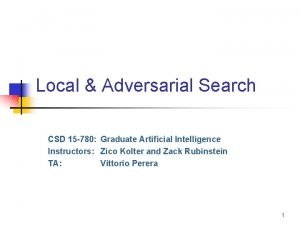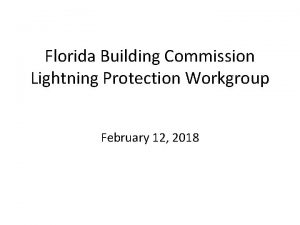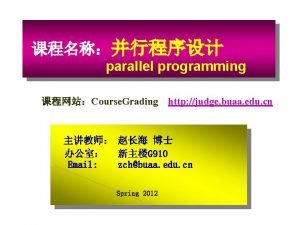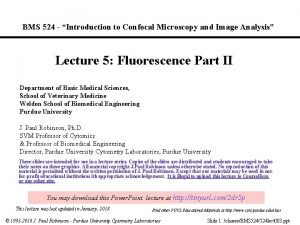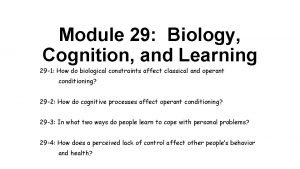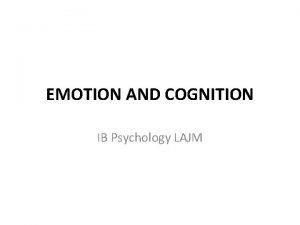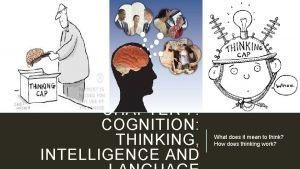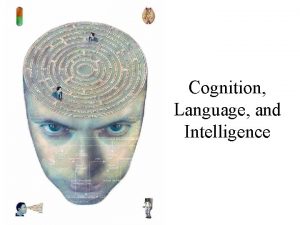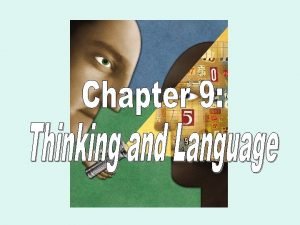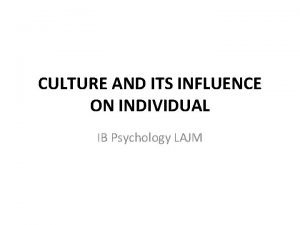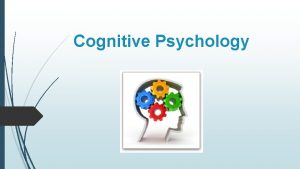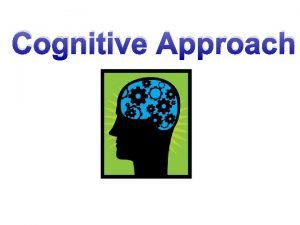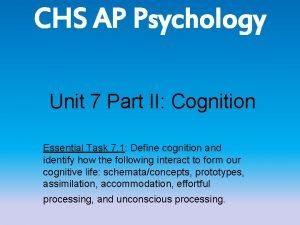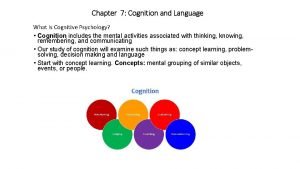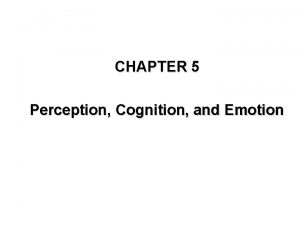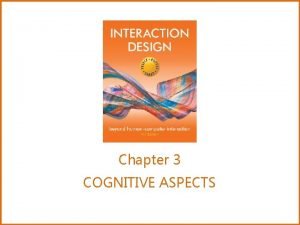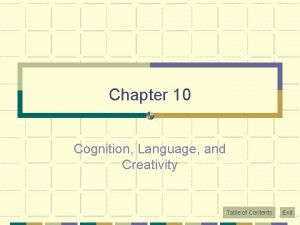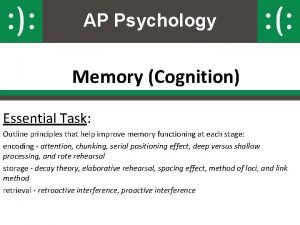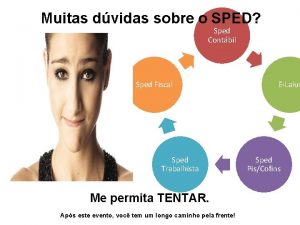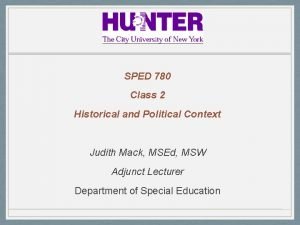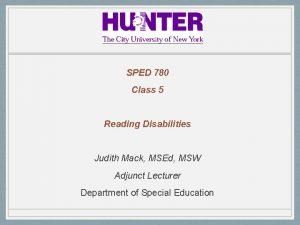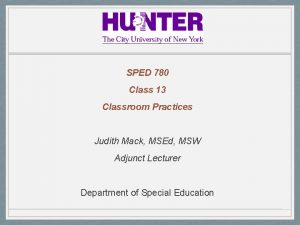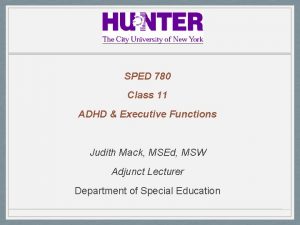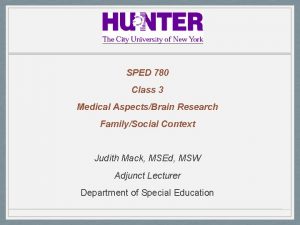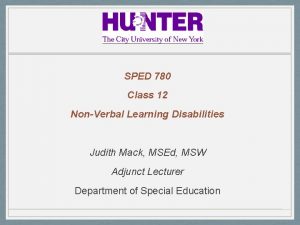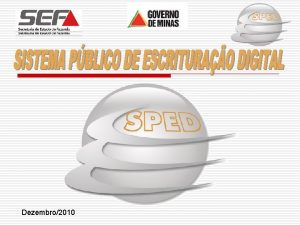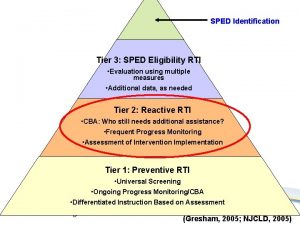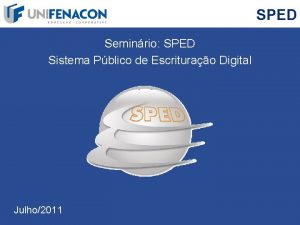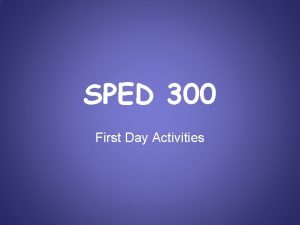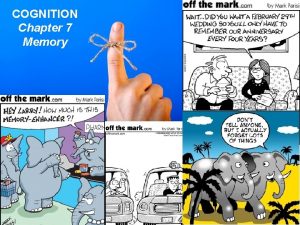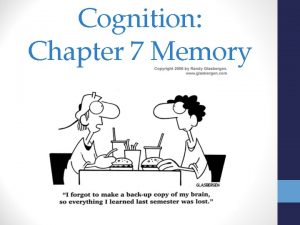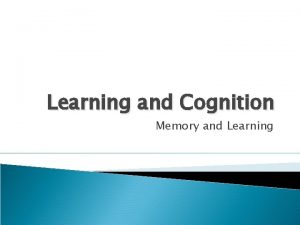SPED 780 Class 10 Memory and Cognition Math













































- Slides: 45

SPED 780 Class 10 Memory and Cognition Math Disabilities Judith Mack, MSEd, MSW Adjunct Lecturer Department of Special Education

Agenda • Learning Disabilities and Life Stories discussion • Memory & Cognition lecture • Math Key Points • Math Activity

Small Group Discussion Small group discussion: • What stood out to you about Lynn’s story? Why? • Lynn writes of several different class situations and tutors who worked with her. What seemed to be most effective for Lynn? What didn’t work? • Lynn writes of going to the room labeled “RR” for “Remedial Reading” which she and others thought stood for “Retard Room. ” How does this relate to your own practice, and how can we ensure our students don’t feel stigmatized because of their LD?

Learning and Memory: Guiding Questions • How can we explain learning and memory? • What do we know about the learning and memory of students with learning disabilities? • How can learning, memory, and motivation needs be addressed?

How Can We Explain Learning and Memory? • Learning and memory include: • • Cognition Metacognition Attention Motivation • Though many theories exist, informationprocessing theory is the current dominant theory of learning and memory.

Information Processing Theory • In this theory, incoming information enters the sensory register and, if attention is paid to it, travels through these information-processing systems: • • • Short-term memory Working memory Long-term memory – stores information in a variety of ways • • • Episodic memory Semantic memory Procedural memory Executive control or metacognitive processes Motivation

Information Processing Theory • Short-term memory • Working memory

Information Processing Theory • Long-term memory – stores information in a variety of ways • Episodic memory • Semantic memory • Procedural memory

Information Processing Theory • Executive control or metacognitive processes • • • Task analysis Strategy control Strategy monitoring • Motivation “internal process that activates, guides, and maintains behavior over time” (Slavin, 2003, p. 329)

Cognitive Styles • Cognitive styles are ways of approaching problem-solving tasks. • Field independence—field dependence – the degree to which people are influenced by their environment when asked to make decisions on perpetual tasks. • Children who have learning disabilities are generally more field dependent than their nondisabled peers.

Cognitive Styles • Reflectivity-impulsivity – degree to which a person takes time to reflect on alternatives before making a choice. • Students with learning disabilities are more apt to be impulsive than their nondisabled peers.

Memory Abilities • Many students with learning disabilities display difficulties with memory: • Short-term memory • Students with learning disabilities perform auditory short -term memory tasks poorly • Working memory • Even more important than short-term memory problems in the reading and math difficulties

Metacognitive or Executive Control Abilities • Metacognitive areas students with learning disabilities can be deficient in: • Metamemory – strategies for thinking about and remembering major points of material • Metalistening – strategies for thinking about and remembering major points of material as one listens • Metacomprehension – strategies for thinking about and remembering major points of material as one reads

Metacomprehension: Reading • Clarifying the purposes of reading • Focusing attention on important parts of a passage • Monitoring one’s level of comprehension • Rereading and scanning ahead • Consulting external sources

Motivation • Motivational problems of students with learning disabilities stem from three interrelated areas: • External locus of control – these students wait for others to motivate, organize, and evaluate th • Negative attributions – these students don’t take pride in success and more readily accept responsibility for their failures • Learned helplessness – the belief that your efforts will not result in the desired outcomes

How Can Learning, Memory, and Motivation Needs Be Addressed? • Cognitive training involves: • Changing the thought process of students • Providing students with strategies for learning • Teaching students self-initiative • Specific cognitive training techniques include: • • Self-instruction Self-monitoring of academic performance Self-determination Mnemonic strategies

Self-Instruction and Self-Monitoring of Academic Performance • Self-instruction – verbalizing the steps in a task • Teaches students to guide their own actions in completing tasks • Self-monitoring – keeping track of one’s own work and making a record of it • Teaches students to understand their strengths and weaknesses

Math Strategy Steps (Self. Instruction) Text page 240 • READ (say, ask check) • PARAPHRASE • VISUALIZE • HYPOTHESIZE • ESTIMATE • COMPUTE • CHECK

Self-Determination and Mnemonic Strategies • Self-determined behavior – making one’s own decisions about important aspects of one’s life • Self-determination skills often must be directly taught to students with learning disabilities • Mnemonic strategies – ways to enhance memory and retrieval skills using visual or acoustic representations • • Letter strategies Keyword method Pegword method Reconstructive elaborations

Keyword Method for Buncombe

Pegword Method for Garnet

Attribution Training • Attribution training – teaching students to recognize the relationship between hard work and success • Pointing out that when students do well, it is due to having tried hard and not giving up • Research on attribution training’s effectiveness has been mixed

Cognitive Strategies • Cognitive strategies combine self-instruction, mnemonic strategies, and attribution training to help students complete various tasks • Two examples of cognitive strategies: • Test-taking strategy – an approach to taking a test that reduces anxiety and helps students show what they know of the content • Content textbook strategy – an approach to completing reading texts successfully in content area textbooks

General Teaching Practices to Activate Learning and Memory • Certain teacher behaviors can help students with learning disabilities better develop their learning capacities, such as: • • • Providing advanced organizers Activating background knowledge Providing distributed practice Engaging students in dialogue Setting appropriate expectations Use of assistive technology devices

Memory and Cognition Wrap-Up Turn & Talk How have you seen difficulties with memory in your students? What strategies have been helpful? What strategies would you like to try?

Math: Key Questions • How does mathematical knowledge develop normally? • What problems in mathematics do students experience? • How are mathematics abilities assessed? • What interventions help students with mathematics difficulties?

How Does Mathematical Knowledge Develop Normally? • Conservation – the preservation of a physical quantity during transformation or reactions • Normally developing young children usually come to school with some informal knowledge. • Most students develop number sense, a conceptual structure critical for mathematics learning, before kindergarten.

How Does Mathematical Knowledge Develop Normally? • Typically, young children come to school having already developed addition skills and the ability to think about numbers as wholes that are composed of parts. • During school years, children gradually develop more sophisticated strategies to solve problems: • • From counting of manipulatives to more efficient strategies Place value – the ability to conceptualize numbers as multiples of ten; also called the decimal, or base-10, system

The Mental Number Line Concept

Cognitive Abilities and Math Skills • Number sense • Neurological deficits • Memory deficits • Language Abilities • Spatial Abilities • Non-verbal learning disabilities

Problems with Math Performance • Performance on basic arithmetic tasks • Mistakes are not random • Errors are usually systematic and indicate a mistaken strategy • Difficulties with story problems • Reading problems negatively affects performance • Features of story problems that cause students difficulties: • • Extraneous information Complex syntactic structures Change of number and type of noun used Use of verbs such as “purchased” or “bought” instead of “was given”

Types of Math Disabilities • Conceptual understanding • Language of math • Written number symbol system • Procedural steps of computation • Application of arithmetic skills • Basic number facts • Problem solving • Lack of Automaticity • Poor word-problem strategies • Poor calculation strategies • Poor number sense • Counting sequences

How Are Mathematics Abilities Assessed? • Teacher referrals due to a specific student’s difficulties • Screening tests can then be administered to determine whether further assessment is needed • Another type of assessment includes testing used to guide program planning • Assessment continues in the form of progress monitoring

Achievement Tests • Schools may screen large groups of students in mathematics to determine who might need additional services. • Common screening tests include most general achievement batteries, such as the California Achievement Test. • Some screening instruments may provide preliminary diagnostic information.

Formal Diagnostic Testing • Diagnostic tests should allow the teacher to determine in which areas of mathematics a student is having difficulty. • The student may be having difficulties in one or more of the following areas: • Basic information, computation skills, problem solving • Fractions, measurement, money • Algebra, geometry

Informal Inventories • Informal inventories – the student completes different kinds of problems so the teacher can determine which kinds of mathematics problems are appropriate for each student • Can be commercially developed or created by teachers • Should be aligned with the curriculum in use • Are administered without time limits or teacher assistance

Error Analysis and Progress Monitoring • Teachers can analyze students’ mistaken answers to determine what to teach. • Instruments such as the Diagnostic Inventory of Basic Arithmetic Skills provide examples and interpretation of mistakes. • Evaluation of students’ progress can be accomplished through: • Achievement tests, diagnostic tests, and informal inventories • Assessment of students’ performances on curricular materials • Adoption or creation of a set of short tests

What Interventions Help Students with Mathematics Difficulties? • Choices of instructional methods should be based on whether the methods are effective. • Developmental programs introduce basic skills such as addition, subtraction, multiplication, and division. • Basal programs – programs used for teaching beginners fundamental math concepts • Examples include Connecting Math Concepts, DISTAR Arithmetic, and the Structural Arithmetic program

Remedial Interventions • Similar characteristics as developmental programs • Critical features include: • Introducing new concepts systematically • Providing adequate practice and review • Teaching big ideas • Examples include the Computational Arithmetic Program (CAP) and the Corrective Mathematics program

Technology • Arithmetic and mathematics lend themselves well to the use of technology. • Debates continue with respect to how calculators should be used. • Computer software can provide the practice opportunities many students with learning disabilities need.

Effective Teaching Procedures • Modeling • Providing a demonstration and permanent model of a correct solution to a problem • Reinforcement • Beneficial when prerequisite skills are in place • Use of mental images • Anchoring math in real world situations

Effective Teaching Procedures • Strategy training – a broad range of methods whereby students are taught component skills required to attack a given type of problem • A task analysis of a cognitive operation is performed • Self-instruction training • Self-instructional techniques – cognitive training techniques in which the teacher and then the student verbalize questions or instructions for performing a task

Task Analysis of Math Problems

Math Activity

For Tomorrow Reading: • Hallahan, Chapter 9 • Barkley • Salend
 Sped tset
Sped tset Williams sped
Williams sped 15-780 graduate artificial intelligence
15-780 graduate artificial intelligence 15-780 graduate artificial intelligence
15-780 graduate artificial intelligence 15-780 graduate artificial intelligence
15-780 graduate artificial intelligence 780 turkeys live in merriam township
780 turkeys live in merriam township Al-khawarizmi (780-850)
Al-khawarizmi (780-850) How many significant figures does 956 have
How many significant figures does 956 have 15-780 graduate artificial intelligence
15-780 graduate artificial intelligence Ind 780
Ind 780 Nfpa 780 annex l
Nfpa 780 annex l Ssin-780
Ssin-780 Ind 780
Ind 780 Ind 780
Ind 780 Vax11-780
Vax11-780 (780) 632-350
(780) 632-350 Internal memory and external memory
Internal memory and external memory Primary memory and secondary memory
Primary memory and secondary memory Virtual memory and cache memory
Virtual memory and cache memory Chapter 7 cognition thinking intelligence and language
Chapter 7 cognition thinking intelligence and language Module 29 biology cognition and learning
Module 29 biology cognition and learning Teacup ib psychology
Teacup ib psychology Chapter 7 quiz cognition thinking intelligence and language
Chapter 7 quiz cognition thinking intelligence and language Similar
Similar Cognition and personalization
Cognition and personalization Semantics prototype
Semantics prototype Implicit and explicit memory
Implicit and explicit memory Long term memory vs short term memory
Long term memory vs short term memory Physical address vs logical address
Physical address vs logical address Which memory is the actual working memory?
Which memory is the actual working memory? Virtual memory in memory hierarchy consists of
Virtual memory in memory hierarchy consists of Eidetic memory vs iconic memory
Eidetic memory vs iconic memory Shared memory vs distributed memory
Shared memory vs distributed memory Cognition refers to
Cognition refers to Types of thought process
Types of thought process Cognition mse
Cognition mse Magec psychology
Magec psychology What is cognition
What is cognition Cognition definition
Cognition definition Mental set ap psychology
Mental set ap psychology What is cognition
What is cognition Types perception
Types perception Altered cognition in older adults is commonly attributed to
Altered cognition in older adults is commonly attributed to What is cognition
What is cognition Cognition definition
Cognition definition Embodied cognition ap psychology
Embodied cognition ap psychology
